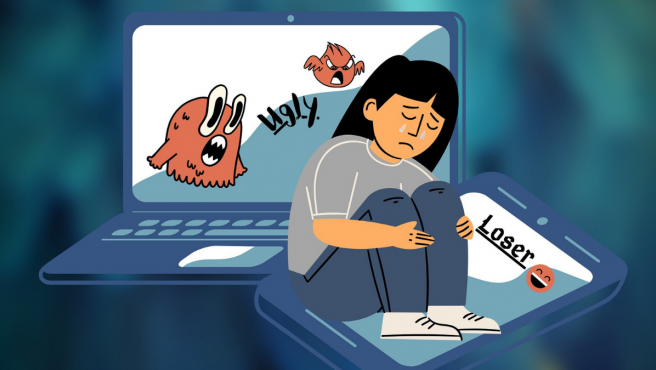Internet access has both good and bad things. The use of social networks and the possibility of their anonymity causes many users to carry out acts that are harmful to the health of other people , such as cyberbullying .
This action, also known as cyberbullying, consists of threatening, insulting, spreading rumors, unwanted contact with strangers, sharing false information or insults about other people through electronic communication devices .
There are different acronyms that explicitly talk about sex.
What does GNOC or GYPO mean? These are the sexual acronyms that you have to be aware of to protect your children on the Internet
According to a UNICEF digital campaign , 6.9% of Spanish students claimed to have been a victim of this type of bullying in 2020. However, the NGO stated that it was difficult to carry out a reliable study because the data varied according to age ranges analyzed and “the definition of what is an aggression and what is not ” also changed.
The most common forms of cyberbullying
The Non-Governmental Organization Save the Children published an article years ago in which it explained what this problem consisted of. To do this, he listed the three most common practices of this type of action in recent years and that most affected children:
Happy slapping: consists of the recording and dissemination over the Internet of a physical, verbal or sexual assault on a minor. It can be shared in a WhatsApp group or through social networks or a web page.
Grooming : it is about cheating or online sexual abuse of an adult towards a minor.
Sexting without consent : is the action of sending photographs or conversations of minors with erotic content to third parties.
According to a 2019 Save the Children survey of 400 young people in Spain , three-quarters of them had suffered online violence throughout their childhood. In fact, 40% of those surveyed suffered cyberbullying for the first time between the ages of 8 and 9, and it was an act that affected girls more than boys.
Technological solutions to cyberbullying
Despite this, the problem of cyberbullying is increasing as users implement social networks in their lives. For this reason, more and more people are using their own technologies to combat this situation.
Google will filter your results to prevent minors from viewing adult content.
Changes in Google policy: minors may request the removal of their images in the browser
Proofup: this mobile application is linked to DAS Seguros and intends to detect early and intervene in this type of case. The platform has the participation of lawyers and psychologists who help minors, parents and teachers to end cyberbullying.
Qustodio : is another app that limits the time children have to use their mobile. In addition, it has an SOS button and geolocation systems in case of danger.
ZeroAcoso : this platform allows students who are suffering cyberbullying to anonymously contact other people who help them.









